Fettuccine Alfredo is a famous Italian pasta with a rich, creamy butter sauce. To harmonize the flavor of this dish, many people choose wine as a familiar drink. So let’s find out what wine goes well with Fettuccine Alfredo.
1. Fettuccine Alfredo
Fettuccine Alfredo, also known as fettuccine al burro (“fettuccine with butter”), is an Italian pasta dish that combines fresh fettuccine with butter and parmesan. When the cheese melts, it results in a silky, rich cheese sauce that coats the pasta. The dish was named after Alfredo Di Lelio, who served it at his Rome restaurant in the first half of the twentieth century.
The meal became famous and later moved to the USA, where it is still popular today. The recipe has evolved, and its commercialized version, which includes heavy cream and other components, is now widely available. It is frequently served as a main meal in the United States, occasionally garnished with chicken or other items.
2. What Wine Goes With Fettuccine Alfredo?

Fettuccine Alfredo (Florentine) is a pasta dish topped with a rich cheese sauce. According to popular opinion, wood-aged wine has rich notes of vanilla, butter, and caramel which does not go well with mixing with this rich Italian pasta dish.
This dish is suitable for dry and fruit-flavored white wines such as Pinot Grigio, and Chardonnay, and light red wines such as Beaujolais and Pinot Noir. Below are some suggestions for Italian wines that can go well with Fettuccine Alfredo.
2.1. White Wine
White wines are considered to easily clarify the tastes of a white sauce, which is why they are often paired with foods like Fettuccine Alfredo. White wine is a good choice for those who enjoy adding shrimp or chicken to their dishes because it complements such foods well.
Chardonnay
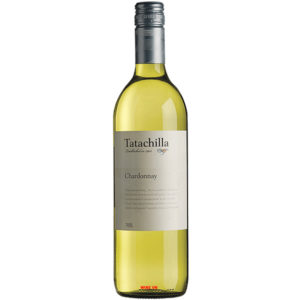
Chardonnay is the best wine to mix with fettuccine alfredo.
Chardonnay pairs well with fettuccine alfredo because wine provides the appropriate balance of fruity tastes, acidity, and alcohol. Chardonnay is the world’s most popular white wine grape, which is why it goes perfectly with tomato sauce pasta, cream pasta, and seafood pasta. Chardonnay, an acidic white wine, pairs well with Italian cuisine. The acidity of Chardonnay adds to the creaminess of creamy pasta and seafood meals. Due to its crisp and rich flavor, Chardonnay is a wonderful accompaniment to Italian cuisine.
Pinot Grigio

Pinot Grigio (Pinot Gris) is a well-known dry white wine made from a gray and blue grape that originated in Burgundy, despite many people mistaking it for an Italian white.
Unsurprisingly, Pinot Gris is an excellent wine pairing for fettuccine alfredo because it is full of tastes of lime, honeysuckle, and green apple, citrus bursts in between bites of creamy sauces, such as those in a meal like shrimp alfredo, work as a excellent palate cleanser.
Goat cheese is a well-known ingredient that pairs well with Pinot Grigio in creamy pasta sauces.
Viognier
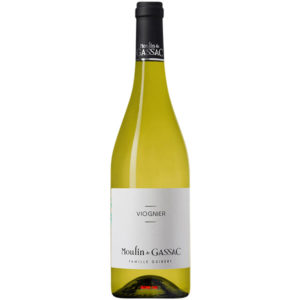
Another white wine option is the French Viognier. This rich, perfumed varietal complements chicken alfredo in a slightly different way than Italian white wines. Viognier, a full-bodied, spicy wine with a high alcohol content, brings out the unusual flavors of the dish.
Viognier is extremely juicy, with rich, supple notes of peach, mango, tangerine, honeysuckle, and vanilla. It’s silky smooth, and the mild sweetness complements the rich and creamy buttery flavor of this classic meal.
Chenin Blanc

Chenin Blanc is a white wine grape that hails from France’s Loire Valley. This wine has a flowery, honey, and apple fragrance and strong acidity levels, making it potentially highly flexible in the kitchen.
Chenin Blanc is a fruity and fresh wine that pairs well with creamy chicken casseroles, seafood, vegetables, salads, and more; the meals you’ll want to pair with Chenin Blanc may vary depending on the variety since flavors can range from luscious fruit to oaky.
2.2. Red Wine
Most wine enthusiasts follow the rule of pairing white wine with white dishes and red wine with red dishes. However, many people choose not to follow that rule.
Pinot noir
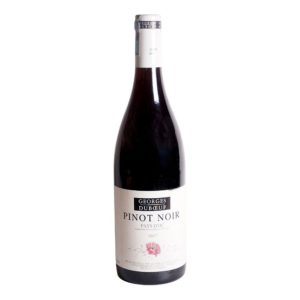
Pinot noir – a light red wine made from Pinot noir grapes grown in the chilly climes of France’s Burgundy area, is a fantastic red wine for pasta combinations, similar to fettuccine alfredo. The grapes used for Pinot noir can have high acidity levels depending on whether the vine stems have been eliminated or not, and Californian Pinot noir has a far greater alcohol percentage than European Pinot noir.
Nonetheless, Pinot Noir’s gentle red fruit aromas bring out the finest in a wide range of foods, including chicken, tuna, salmon, veal, duck, and many more.
Beaujolais
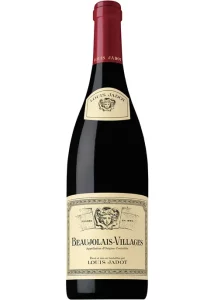
Beaujolais has a similar flavor profile to Pinot Noir or Barbera, making it a fantastic alternative to serving with chicken alfredo if you’re seeking something new. This wine pairs well with alfredo because of its crisp fruity aromas of cranberry, raspberry, blackberry, and red currant. The fruitiness of the wine is balanced by the creamy yet mild flavor of Fettuccine Alfredo.
2.3. Italian Wines
Because there are over 500 varieties of Italian wine to pair with the main dish, selecting the appropriate Italian red wines can be quite a struggle, even for expert wine tasters.
A red wine like Chianti Classico, for example, brings out red recipes like spaghetti bolognese and crimson pesto. A bottle of Chianti with your favorite pasta topped with parmesan cheese is a robust-tasting joy!
Riesling wine
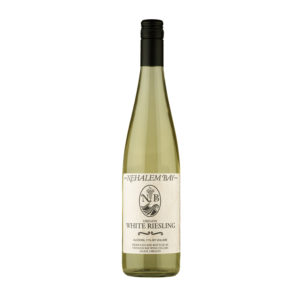
Pink Moscato is a reasonably priced white wine with flavors of cherry, citrus orange, raspberry, pomegranates, and jasmine that add a touch of sweetness to any pasta dish. Riesling is a white grape variety from Germany’s Rhine area that is rarely oaked and always fragrant. Drink a dry Riesling wine with pork chops, fettuccine alfredo, chicken stir fry, robust salads, and other wonderful compliments for the wine’s apple, peach, apricot, and pear flavors.
2.4. Sparkling Wine
Sparkling wine, also known as champagne in America, is a wine created from white grapes or rosé that contains trace amounts of carbon dioxide, making it bubbly like soda pop.
Sparkling wine, which has a sweet taste, is typically between a spectrum of tastes from dry rosé to “doux” kinds, referring to soft in French. Including sparkling wine in your meal is a lovely way to liven up your dinner. The bubbles help to freshen a rich food like fettuccine alfredo.
2.5. Champagne
There is nothing like champagne to announce a “special occasion.” These wines are remarkable due to the traditional way of producing wine and the outstanding renown of the Champagne wine area. The sparkling wines of the region are typically prepared from a combination of different varieties.
2.6. Other Wine Pairings For Pastas
Cabernet Sauvignon
Cabernet Sauvignon, another red wine that pairs well with high-fat dishes, is the most extensively cultivated wine grape, with around 341,000 hectares of vines worldwide.
Understanding the alcohol content and body of the Cabernet Sauvignon will be key to determining which dishes will go best with the bottle of wine. It is critical that the wine roughly fits the weight of the dish. This wine is typically paired with red meat, such as lamb or steak.
Rosso di Montalcino
Dry, juicy red wines like Rosso di Montalcino are both delicious and inexpensive when compared to other wines.
Young Rosso di Montalcino has powerful notes of red and black cherry, as well as other wild fruit. Deep cherry, star anise, plum, and spice aromas emerge with aged Rosso di Montalcino. Steaks, as well as cheeses such as Parmigiano, pecorino, and asiago, go nicely with this dry red wine.
Picking what wine to pair with your pasta will depend firstly on what type of sauce is used and then on any main proteins in the dish. Take for example a tomato sauce pasta and how it would be in your best interest to pair that dish with a medium-bodied red wine.
With luck, fettuccine alfredo wine pairing is made easy with how influential the richness of the dish truly is.
The wines of Northern Italy and Sicily pair nicely with Alfredo sauce when it comes to region-specific pairings. Cool climate wines are also a wonderful fit since their acidity can reduce the rich flavor of the sauce.
Winemaking skills can decide wine and Alfredo sauce matching. Wines aged in oak barrels can enhance the buttery taste of the sauce, while high-acidity wines tend to decline the richness of the sauce.
Try mixing Fettuccine Alfredo with a Chianti for a genuinely classic experience. The Chianti’s robust taste will enhance the rich creaminess of the sauce, and its tartness will aid in balancing the dish. Pinot grigio or prosecco are also good choices with seafood fettuccine.
Picking what wine to pair with your pasta will depend firstly on what type of sauce is used and then on any main proteins in the dish. With luck, fettuccine alfredo wine pairing is made easy with how influential the richness of the dish truly is.
You might be like:
- Everything You Need to Know About 24 Bottle Wine Fridge Dimensions
- How Long is Chardonnay Good for? Tips and Guide
- What Is The Driest Red Wine? | A Professional Guide
3. Five Perfect Paste & Wine Pairing
-
Classic ragù bolognese
Nothing stands up to the sharpness in this sauce like Italy’s native reds. The fresh acidity and herbaceous nuances of Sangiovese complement the layers of taste in the Ragù. You can enjoy Sangiovese in two ways: Chianti Classico, which is a good value, or Brunello di Montalcino, which is more expensive. besides Italy, consider a serving of Zweigelt from Austria, which has many of the same flavors but a more polished
-
Shrimp scampi
Shrimp Scampi is mainly made of shrimp, butter, garlic, parsley, and lemon, but a generous splash of fresh white wine to the sauce never hurts. A fresh white wine is ideal to combine with Shrimp Scampi due to the sharpness of lime that balances out the buttery richness. Try Muscadet’s fruity tastes, or for a more substantial choice, Etna Bianco’s minerally white wines achieve the perfect balance. A good Chablis with salty and lemon aromas would also be a no-brainer.
-
Pesto
Pesto is rather simple to make; all you need is a lot of fresh basil. to Pair a light white wine like Sancerre or Grüner Veltliner with pesto to bring out the herbaceous elements without overpowering them. Each has herbal notes and sharp acidity that blends well.
-
Spaghetti alla carbonara
Carbonara can be paired with either white or red wine, ranging from the Garganega-based Soave wines of the Veneto to the vivid Alpine reds of the Valle d’Aosta. A classic Pinot Noir from New Zealand’s Central Otago region or California’s Sonoma Coast would also be wonderful.
4. Why do Italians drink wine with pasta?
The alcohol in wine causes the dissolution of molecules of flavor in the sauce, allowing every component with which the wine comes into touch to taste even better.
The drinking culture in Italy is as regimented as the food culture, and both of them are inextricably linked. Italians consider drinking in terms of how it might complement the meal that it comes with. Pre-drinking wine before serving pasta is normally not done in Italy because the wine is designed to complement the cuisine. In the more romantic Italian language, they were made for each other.
5. Tips for pairing wine and food.
Similar to the “traditional” combining principle – combining based on color similarity: “red wine for red meat (red dishes) – white wine for white meat (white dishes)”, wine with The same goes for spaghetti. On the other hand, the choice of drink for pasta will be based on its sauce (because the type of noodles is not important, the important thing is that wine is a “springboard” that helps increase the rich flavor of the sauce).
The red sauce will often be served with a full-bodied red wine
Cream sauces and seafood should be served with white wine.
Red wine with red sauce
Red wine is a traditional pairing for red spaghetti sauce.
- The passionate red color of Tempranillo, Sangiovese, or Chianti will blend and stand out on the acidity of red tomatoes
- Syrad is best suited for sauces with a lot of beef
- Pinot noir is suitable for sauces with hard cheese such as Parmesan, Pecorino
- For spicy sauces, Merlot is a great combination.
White wine with white sauce
Most white sauces (cream sauces) will tend to be thick and thick and are extremely suitable when served with a glass of white wine.
- If spaghetti with cream sauce is served with meats such as poultry, seafood, pork, or ground meat, you should choose Sauvignon Blanc, Pinot Grigio, Pinot Gris, or Pinot Blanc.
- If you want the flavor of the sauce to be more passionate and blended, you can use Riesling or Vouvray
- For pesto sauce (a green uncooked sauce made by pureeing ingredients in a stone mortar), Soave or Chardonnay are quite interesting choices.
Wine with seafood spaghetti
Traditionally, seafood pasta should be served with white wine.
- For delicate dishes such as white fish, you should combine it with Sauvignon blanc
- For richer dishes containing salmon or shellfish, choose oak-free Chardonnay, Pinot grigio or white Bordeaux.
6. FAQs
Q: What to Serve with Fettuccine Alfredo
Although Fettuccine Alfredo is typically served as a main course, it can also be mixed with other meals to create a more comprehensive evening. Fettuccine Alfredo, for example, complements vegetables like asparagus tips or green beans wonderfully. The sweetness of the vegetables serves to bring out the rich flavor of the Fettuccine Alfredo.
Mix Fettuccine Alfredo with salad dressed in vinaigrette dressing as another delectable alternative. The acidity of the salad dressing decreases the richness of the pasta, causing it to be fresh and light.
Q: How long will Fettuccine Alfredo last in the refrigerator?
The flavors blend and the consistency of the sauce will become thicker as it cools. So, if you have leftovers, don’t hesitate to reheat them for a more delicious meal. Simply consume Fettuccine Alfredo within four days of cooking.
Q: Why is wine important in Italian cuisine?
For a variety of causes. It has always existed, and no region of Italy is without its unique wine. It is traditionally served at every meal (excluding breakfast). Enotria (the land of wine) was one of Italy’s ancient names. Vineyards shape the landscape in many areas, wine is even mentioned in various idiomatic phrases (such as dire pane al pane e vino al vino, i.e. to be open and sincere, or il vino fa buon sangue, i.e. wine makes good blood or Latin in vino veritas), and it is an important economic sector.
7. Conclusion
Each type of wine will bring its flavor when combined with Fettuccine Alfredo. Choose a suitable wine according to your taste to have the best experience with Fettuccine Alfredo!

In 2014, Leo Colon began working with Big Cottonwood Winery. Over the years he has remained part of this prestigious winery’s team and is also a contributor to other notable wine publications. As an ardent advocate for knowledge, Leo continues his vinous education to this day.

